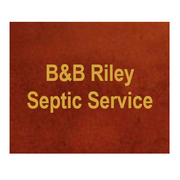
Septic systems are wastewater treatment structures found on residential and commercial properties. Buried underground, a septic tank and perforated pipes in a drainfield are used to treat wastewater before the liquid reenters the environment. To understand how a septic system works, below is a brief guide to the different parts.
Wastewater Separation
Wastewater from sinks, shower stalls, toilets, and laundry equipment flows down a main drainage pipe and into the septic tank. Made of polyethylene, concrete, or fiberglass, the vessel is the site where wastewater is separated, typically by bacteria within the tank. Solids sink to the bottom to form the sludge layer, while oils and grease rise to the top to create a film of scum.
The effluent layer rests in the middle and is the only waste to exit the tank. As sludge can build up at the bottom of the tank and cause the vessel to overflow, the solids should be removed by a septic pumping professional every two or three years.
Drainfield Filtration
 Once wastewater is separated in the septic tank, the effluent will seep out of the container through an outlet pipe. The pipe connects to a network of perforated pipes buried in a trench known as the drainfield, which is a shallow area covered with soil, gravel, and other porous materials.
Once wastewater is separated in the septic tank, the effluent will seep out of the container through an outlet pipe. The pipe connects to a network of perforated pipes buried in a trench known as the drainfield, which is a shallow area covered with soil, gravel, and other porous materials.
As the sewage is released into the perforated pipes, the liquid will slowly filter through the surrounding earth. This helps remove any remaining impurities from the liquid so the particles don’t contaminate your groundwater.
To extend the life of your septic tank and drainfield, contact the crew at B & B Riley Septic Service in West Plains, MO. In business for over a decade, the licensed and insured technicians will provide septic pumping, cleaning, and additional solutions to prevent performance problems. Take a look at the various types of work the team can tackle by visiting their website and call (417) 256-5062 for a septic tank cleaning or pumping appointment in the Howell County area.
About the Business
Have a question? Ask the experts!
Send your question

